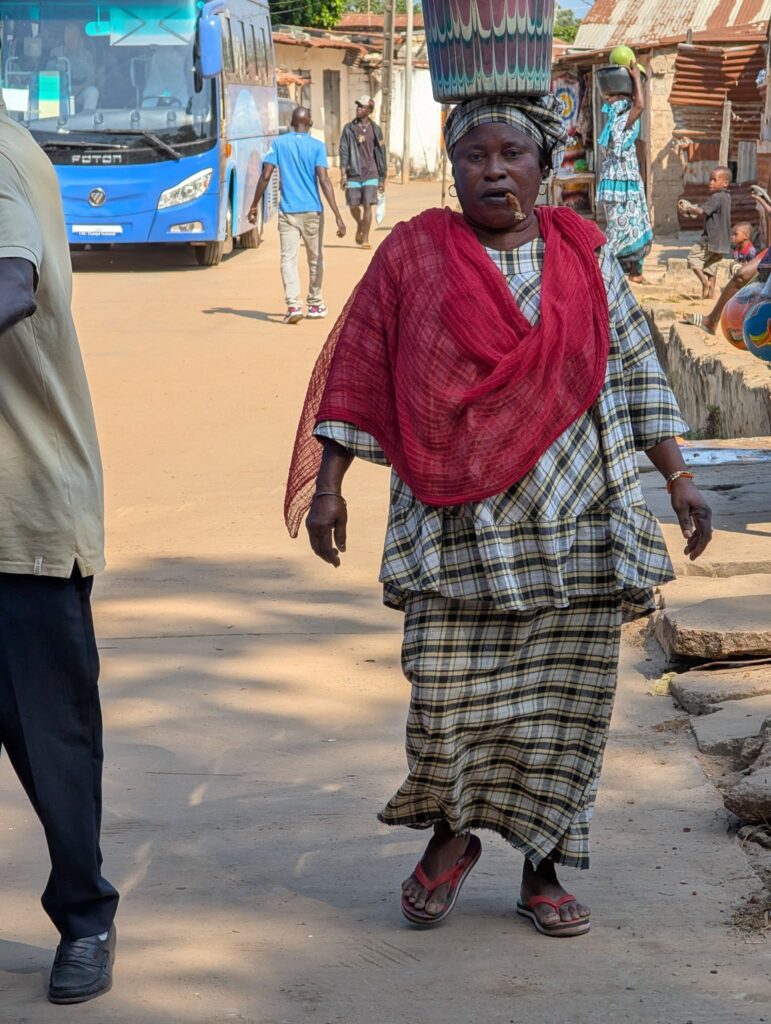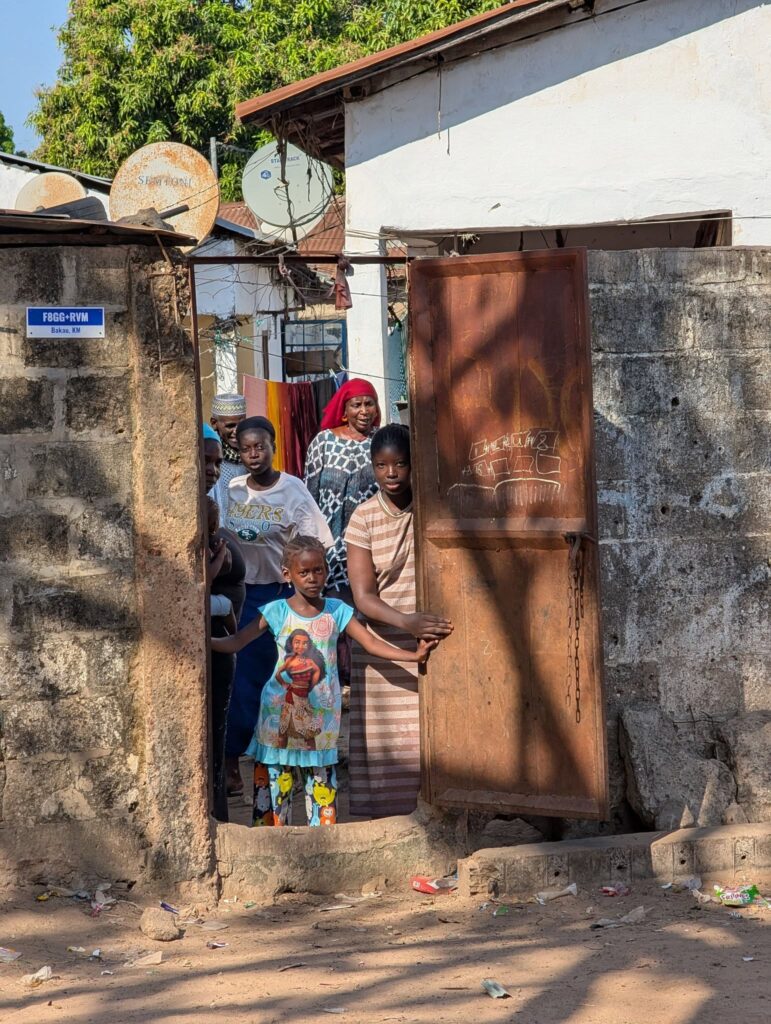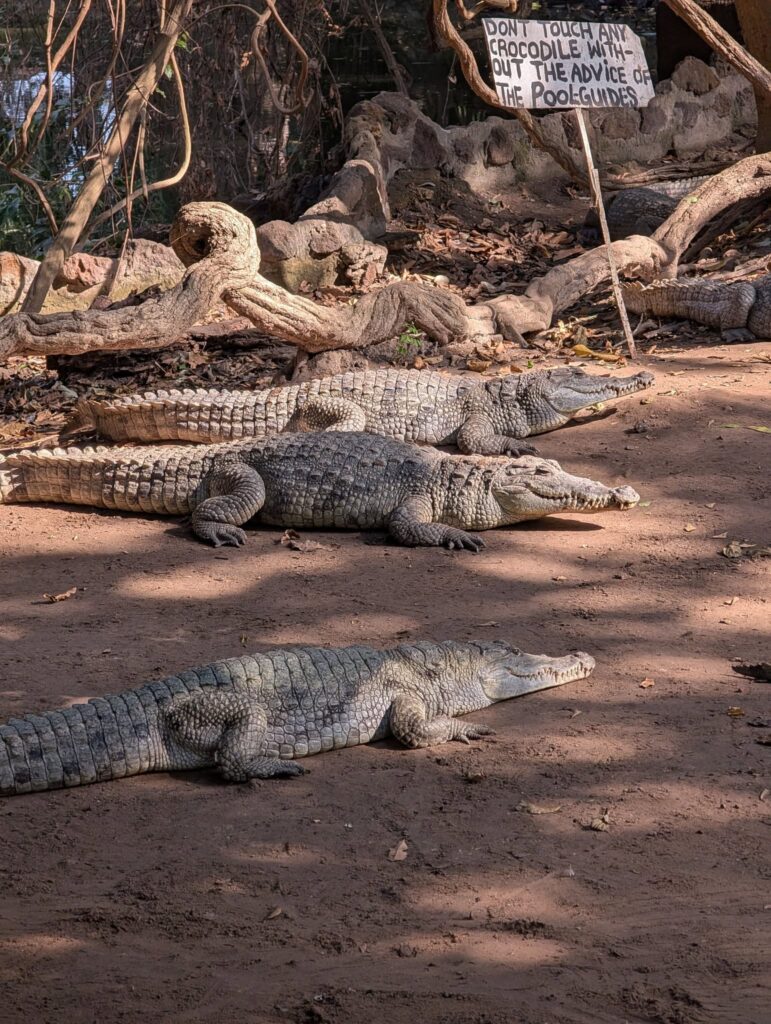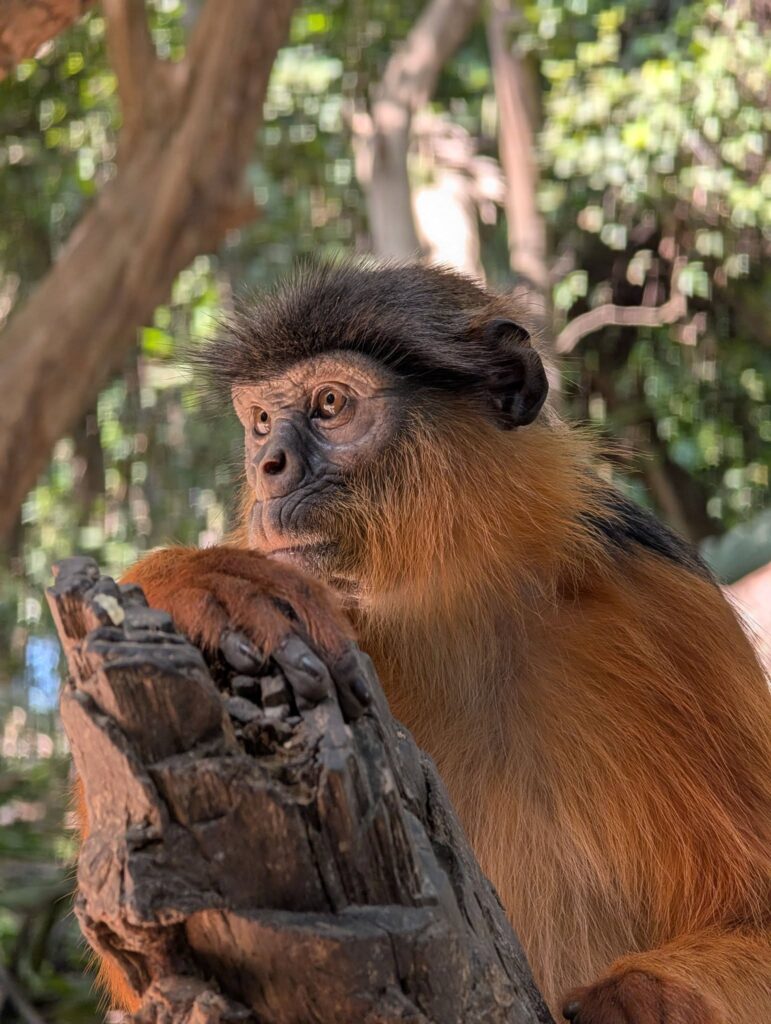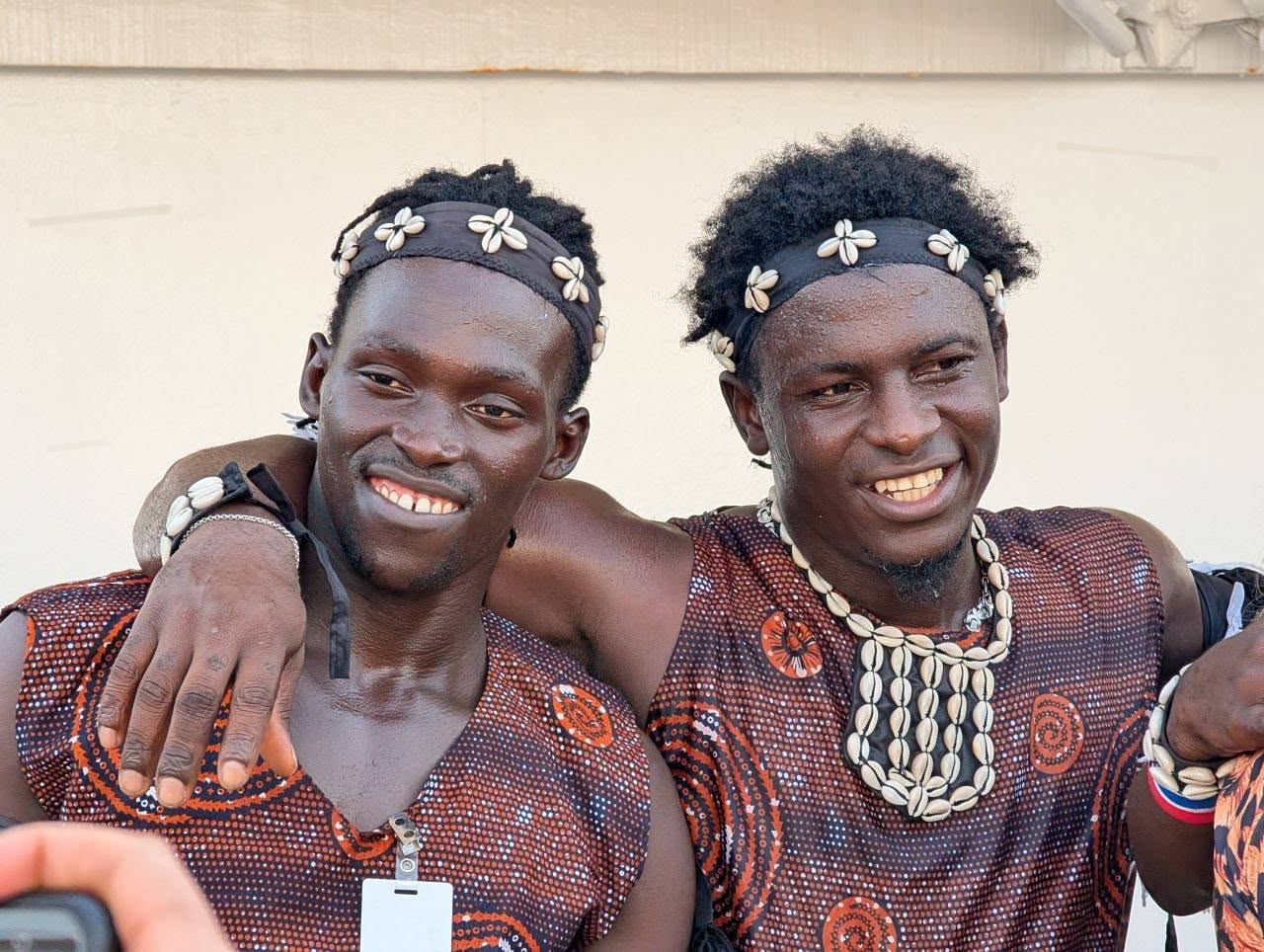The sun rose over the Gambian coastline, casting a reddish-golden glow across the bustling port of Banjul. We exited the ship into the already steamy morning and boarded the shore excursion bus that would transport us through the smallest country on mainland Africa. A former English colony, Gambia uses English as its official language. However, the nation is a tapestry of tribes, each with its own language and customs. Our day promised an exploration of sacred groves, a mysterious crocodile pool, and a forest alive with playful monkeys.
Magical Baobab Trees
Our first stop took us to view baobab trees, towering sentinels that seemed to hold the wisdom of centuries within their massive trunks. Known locally as the “Tree of Life,” baobabs are revered across Africa not just for their longevity (1,000 to 2,500 years!) but for their practical and spiritual significance. A local guide explained how every part of the tree is used by the community: the fruit, rich in vitamin C, is made into a tangy drink and used in cooking; the seeds yield oil; and the leaves are brewed into medicinal teas. Samples were offered to our fellow cruisers, but we passed, wary of any unintended consequences.
The baobab isn’t merely useful—it is sacred. Cutting one down is taboo, believed to bring misfortune or calamity. Firewood and lumber must be gleaned from other sources. Listening to these tales, we felt a sense of awe standing beneath an ancient giant that has witnessed generations come and go.
We noticed small holes in the lower trunk of one tree and asked about them. The guide explained that locals bring their wishes written on paper notes and pound them into the holes, hoping their prayers will be answered.
While we were gathered there, two brothers, both griots—highly respected oral historians and musicians—entertained us with songs and stories. One played a kora, a mesmerizing 21-string harp. The rhythmic music and their soft voices added an almost mystical quality to the verdant setting.
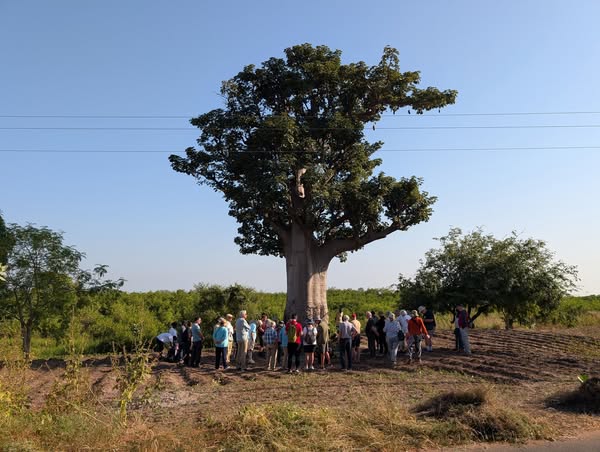
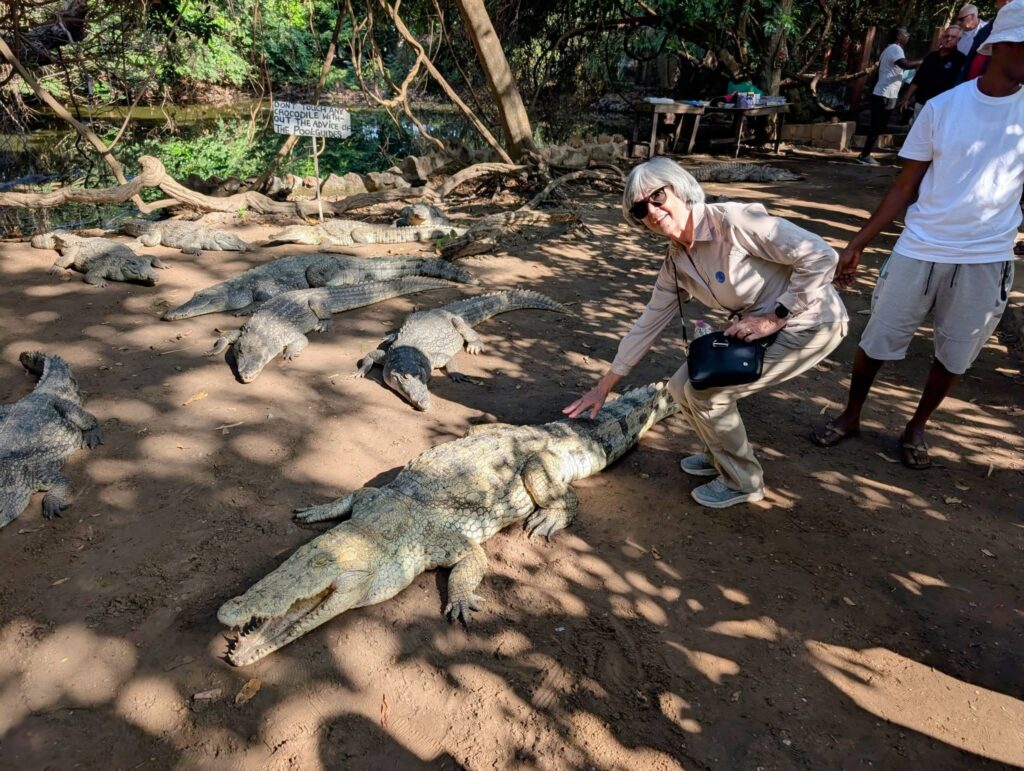
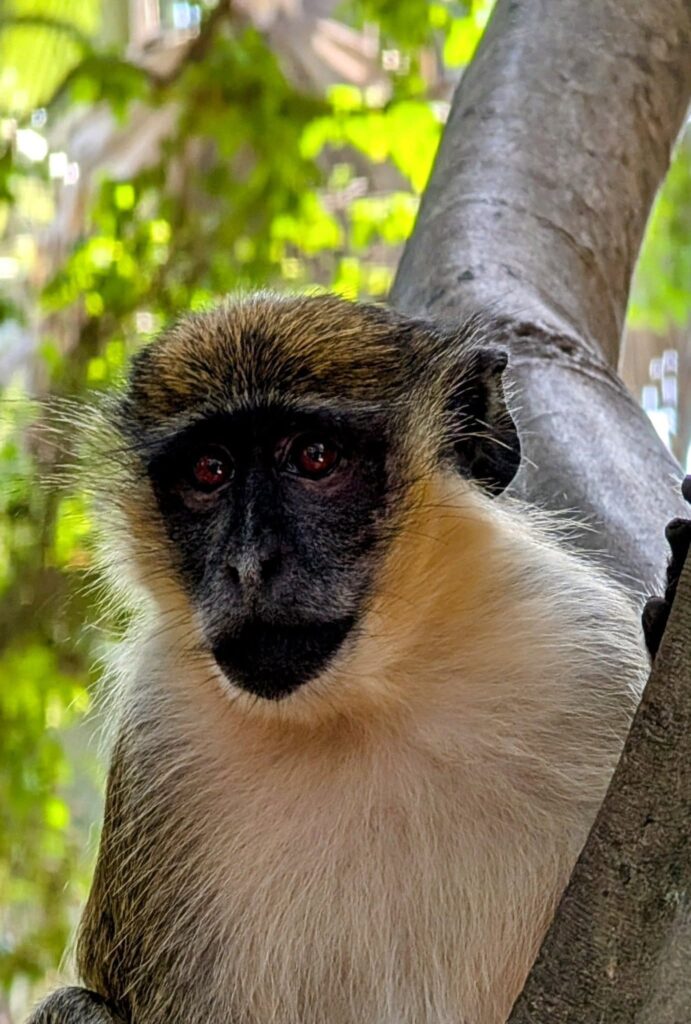
The Kachikally Crocodile Pool
Leaving the stately trees, we journeyed into a neighborhood in the old town. The area, by any standard, was impoverished. Tumbledown houses lined narrow streets flanked by open sewage trenches, which filled the sultry air with a foul odor. Children, out of school on this Sunday morning, stared and waved. While it was clear Gambia, an independent country only since 1965, faces challenges, signs of progress were visible in the newly paved roads and budding infrastructure. The sense of a nation moving in the right direction was heartening.
We walked through a local museum and then followed a narrow path that opened, almost suddenly, at the Kachikally Crocodile Pool. The view was almost surreal: crocodiles of all sizes lounged lazily on sandy banks, uninterested in the shorts-wearing visitors wandering dangerously close. Their lethargy could perhaps be attributed to their ample diet, the hot sun, or old age. Some seemed almost comatose until they opened their fearsome jaws.
Among the crocodiles was a giant albino specimen, its pale hide shimmering in the sunlight. Visitors lined up to take photos, each hesitantly approaching for their turn to pet the enormous reptile. At first, we suspected the creature was either stuffed or sedated, but occasional movements—an eye flicker, a twitch of its tail—quickly dispelled those theories. Petting the crocodile was nothing like stroking a puppy or kitten. Just touching its rough hide sent a rush of adrenaline through us.
Our guide explained the pool’s sacred significance. Locals believe its waters possess special powers, particularly for women facing difficulties in childbearing. Pregnant women visit the pool to pray for safe deliveries, and many include Kachikally in their children’s names in gratitude. It was humbling to witness the intersection of nature, culture, and spirituality in such a profound way.
A Walk in Monkey Park
Our final stop brought us to a monkey park, a lush forest not far from the seashore. The palm and tropical tree canopy filtered sunlight into dappled patterns on the forest floor as we followed winding dirt paths into its depths. Birds sang from the treetops, adding to the exotic ambiance. Soon, we spotted monkeys darting through the trees, their quick movements accompanied by playful chatter. Bananas and peanuts were available at the ticket office to feed them, and they seemed eager to enjoy the treats. Their playful antics and poses were camera magnets—I must have taken dozens of pictures.
One highlight was watching young monkeys play in the branches, tumbling and chasing each other like mischievous children. Among them were green monkeys (Chlorocebus sabaeus), their olive-toned fur blending seamlessly with the forest foliage. To our delight, we also easily spotted beautiful red colobus monkeys (Piliocolobus badius temminckii). They were less playful than their green-tinged cousins but unafraid to pose on branches hanging over the path. Walking through this enchanted forest, surrounded by vibrant life, was a fitting end to our land exploration.
Onboard Cultural Performance
But our introduction to this little-known country wasn’t over. Back onboard, we were treated to a lively and exciting performance by the Nimba Cultural Dance Group. Drummers filled the pool deck with pounding rhythms that inspired song and energetic dance by the group’s half-dozen women, despite the sizzling afternoon heat. One performer even swallowed fire, drawing gasps from the captivated audience. Their performance was another wonderful example of the cultural enrichment programs offered by Azamara.
